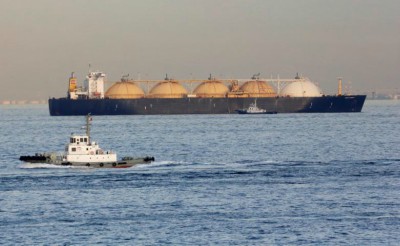China faces daunting task to suck in gas and wean itself off coal
BEIJING (Reuters) -- China has set itself a staggering task to cure its smothering pollution: switching coal-fired boilers and heating systems in at least 1.2 million households in 28 of its smoggiest northern cities to run on gas or electricity. By October.
 |
| Photo Courtesy of Reuters. |
Beijing's latest crackdown on pollution, outlined in a policy document dated Feb. 17 and seen by Reuters this week, dangles a potentially game-changing carrot for the country's saturated global natural gas market.
The projected extra needs would inflate China's gas demand by a quarter, according to consultancy Wood Mackenzie -- some 50 Bcm, more than the whole of France consumes in a year. That would offer the prospect of boosting prices in a seller's market and surging LNG imports.
There's a large, expensive catch. Such expansion is all but impossible without investing in doubling underground storage capacity, building thousands of miles of pipeline to carry the gas in the west to the eastern cities, and installing pump stations in rural villages - all of which is supposed to be complete within a meager seven months.
"The magnitude of this policy is unprecedented," said Guo Zihua, head of a rural development department at Beijing city hall that deals with villages surrounding the capital - now on the front line of the battle for cleaner air.
"The central government has given us very little time to remove coal heating in rural villages. We are under tremendous pressure to reach the target," said Guo, speaking during a tour on Thursday of Beijing's outskirts designed to highlight the scale of the task.
The radical plan comes as Beijing ramps up its years-long war on pollution by attempting to wean the nation off coal, its favorite fuel but one that chokes the north during China's cold winter months. Most power plants run on coal.
The speed at which the project turned from a draft, issued in January, into an order suggests the government is determined to tackle the problem -- at any cost. The issue of pollution has become a political hot potato that will be a major topic during China's upcoming annual parliament meeting, starting on Sunday.
If Beijing official Guo's calculations are anything to go by, that cost will be enormous: by October, the capital must convert boilers serving around 300,000 residents to run on gas or electricity rather than coal, and is plowing $1.45 billion into funding the switch.
And for provinces that aren't as advanced as the capital, the challenge will be much more difficult and costly, said an official at the city's coal department on Thursday.
HUGE QUESTIONMARKS
As well as a matter of improving national health, curbing pollution is a key part of a strategy of upgrading the economy by shifting away from heavy industry like public construction projects and tackling overcapacity.
Yet analysts say the plan's fate will rest on a massive, breakneck infrastructure build-out including LNG terminals, storage tanks and pipelines.
"If you look at the pollution in China, it's clearly a massive problem so it's not a surprise they want to do this," said Neil Beveridge, senior oil and gas analyst at Sanford C Bernstein. "The big question is: how are they going to achieve it?"
Underground storage capacity needs to increase to around 40 Bcm, or 20% of annual demand, to support the boost in demand. That'd be up at least more than double an estimated current capacity 10-20 Bcm.
The daunting scale of the plan leaves huge question marks over the prospects of its success. But in the meantime, construction and energy companies are gearing up for a windfall.
Some, like China National Petroleum Corp, were already at work on extending the country's gas infrastructure. CNPC is building the fourth Shaanxi-Beijing gas pipeline, a critical 1,114-km line with 25 Bcm capacity reaching China's northeastern region.
The existing three lines with 35 Bcm are already operating at full capacity. Whether by coincidence or design, the new pipe is due to come into operation by October this year.
Reporting by Meng Meng and Josephine Mason; Editing by Kenneth Maxwell

- ExxonMobil halts 1-Bft3d blue hydrogen project in Texas
- Aramco and Yokogawa commission multiple autonomous control AI agents at Fadhili gas plant
- Ukraine will resume gas imports via Transbalkan route in November
- Mitsubishi to inject $260 MM into Brunei LNG project
- Freeport LNG (U.S.) on track to take in more natgas on Thursday after unit outage



Comments